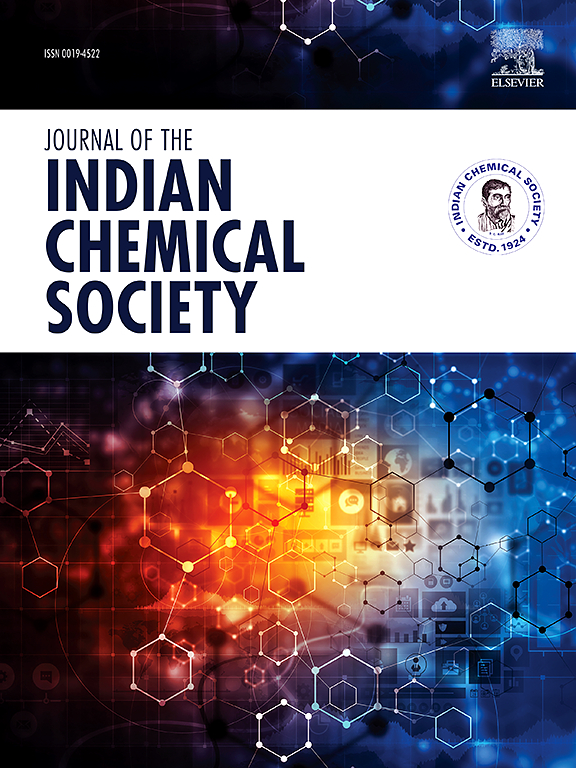Improved efficiency of silver incorporation in the lattice of zirconium oxide via hydrothermal process for photovoltaic application
IF 3.2
4区 化学
Q2 CHEMISTRY, MULTIDISCIPLINARY
引用次数: 0
Abstract
Silver-zirconium oxide (AgZr2O4) is a promising photovoltaic material because of its 2.8 eV bandgap, high electron mobility, and light stability. Previous research on metal oxide-doped Zr2O4 thin films and nanoparticles is extensive, but its nanostructured form on conductive surfaces has received little attention. The hydrothermal method has been used to synthesize the material. The material reveals a deceased in the VOC from 0.53 V to 0.41 V upon silver substitution within the Zr2O4 lattice. The Jsc values obtain increase from 10.93 to 18.72 mAcm−2. Adding silver (Ag) to the Zr2O4 lattice reduces its bandgap energy, enabling it to absorb a wider range of light, especially more visible light. FF values obtain increases from 68.8 to 72.6 %. A rise in FF shows improved conversion of input energy to useable power. PCE values obtain increased from 5.2 to 7.5 % with silver on Zr2O4. The high conductivity of silver enhances charge transport within the device, resulting in improved efficiency. Bandgap energy drops from around 2.8 eV (Zr2O4) to 2.6–2.2 eV (AgZr2O4) with silver substitution. Reducing the band gap increases light absorption; however, this also increases charge carrier recombination, decreasing the open-circuit voltage.

求助全文
约1分钟内获得全文
求助全文
来源期刊
CiteScore
3.50
自引率
7.70%
发文量
492
审稿时长
3-8 weeks
期刊介绍:
The Journal of the Indian Chemical Society publishes original, fundamental, theorical, experimental research work of highest quality in all areas of chemistry, biochemistry, medicinal chemistry, electrochemistry, agrochemistry, chemical engineering and technology, food chemistry, environmental chemistry, etc.

 求助内容:
求助内容: 应助结果提醒方式:
应助结果提醒方式:


